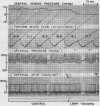Abstract
Studies were performed on 11 healthy men to evaluate the role of low pressure baroreceptors in the reflex forearm vasoconstrictor responses (plethysmography) to venous pooling produced by lower body negative pressure. Lower body negative pressure (LBNP) at - 5, - 10, - 20, and - 40 mm Hg lowered central venous pressure by 42, 59, 74, and 93%, respectively, and decreased forearm vascular conductance by 24, 29, 34, and 40%, respectively. The decreases in forearm blood flow and conductance during the low levels of venous pooling (LBNP - 5 and - 10 mm Hg) occurred without significant changes in arterial pressure, arterial dP/dt. and heart rate. These results with the low levels indicate that maneuvers which decrease venous return and central venous pressure in man can influence forearm vascular tone without significant changes in the determinants of carotid and aortic baroreceptor activity. During high levels of venous pooling (LBNP - 20 and - 40 mm Hg), significant decreases in arterial pressure and dP/dt and significant increases in heart rate accompanied the further reductions in central venous pressure, forearm blood flow, and forearm vascular conductance. About 73% of the decrease in conductance during venous pooling at LBNP - 40 mm Hg, which was sufficient to decrease arterial pressure and activate high pressure baroreceptor reflexes, occurred during low levels of venous pooling at LBNP - 10 mm Hg without changes in arterial pressure. This suggests that much of the forearm vasoconstriction with the high levels of venous pooling, which were sufficient to decrease arterial pressure, may be accounted for by reflexes originating in areas other than high pressure baroreceptors. The results of these studies suggest that low pressure baroreceptors exert an important influence on forearm vascular tone during decreases in venous return and central venous pressure in man.
Full text
PDF
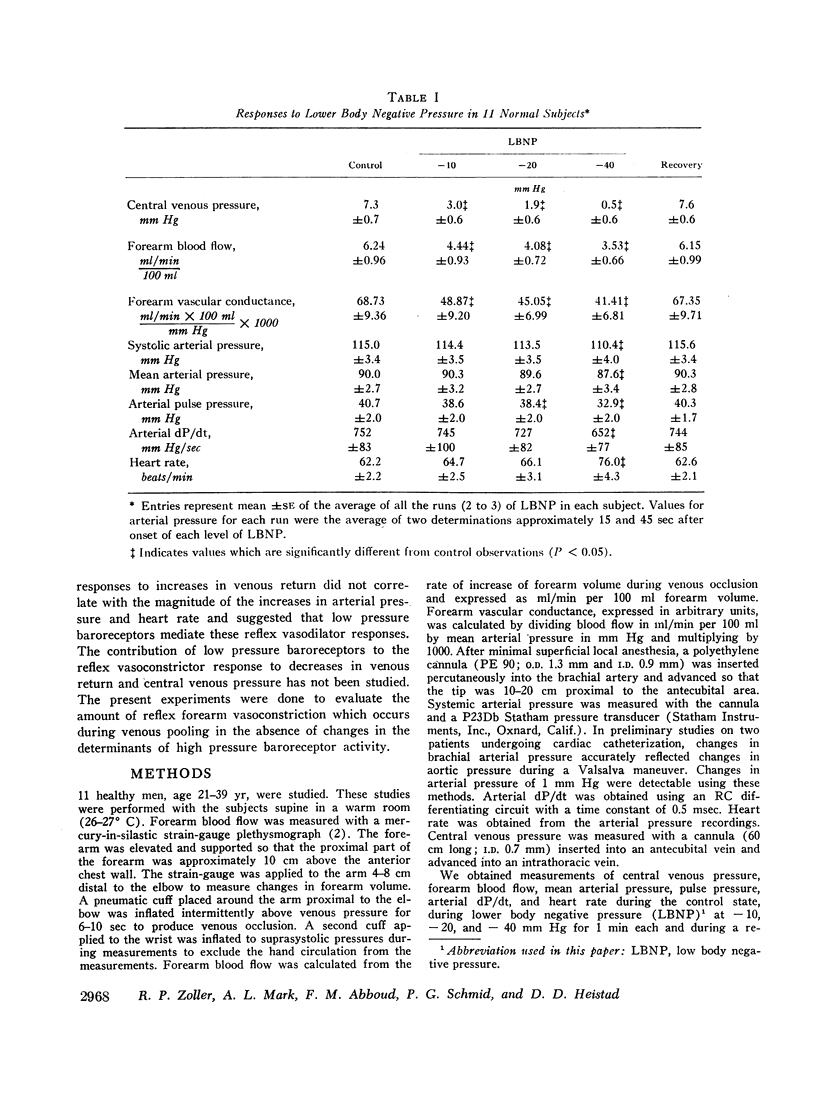
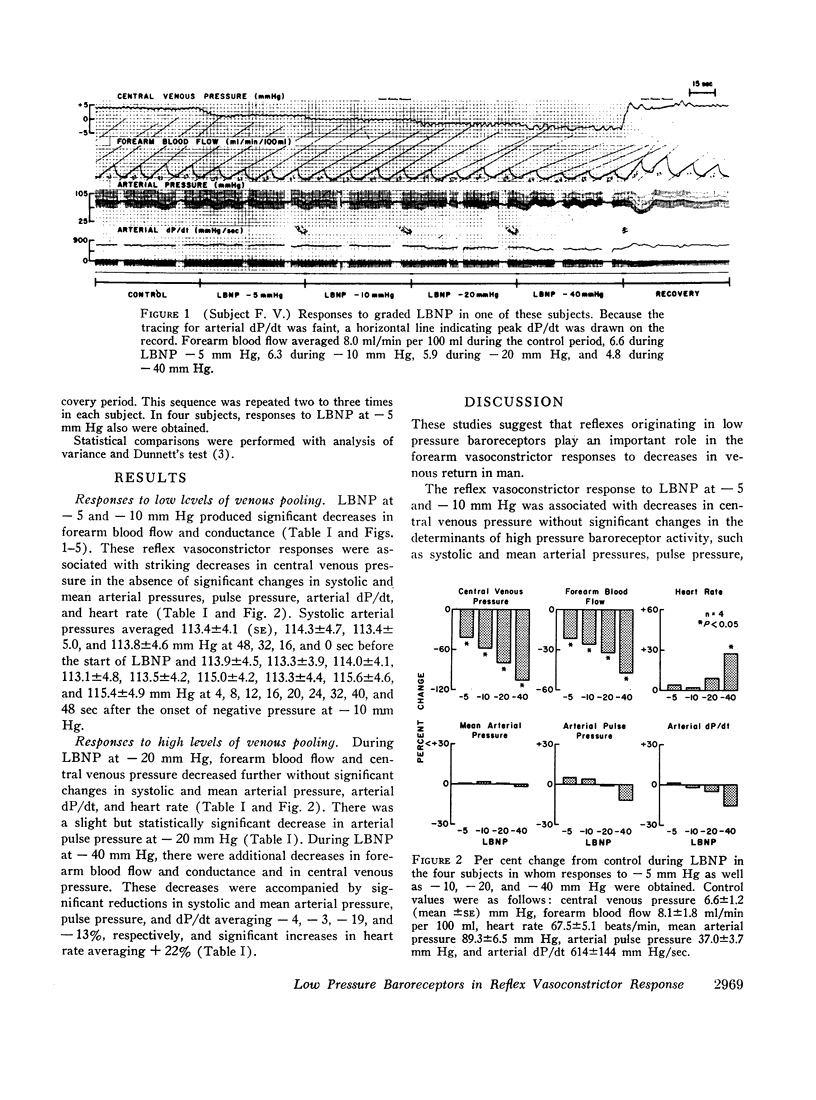
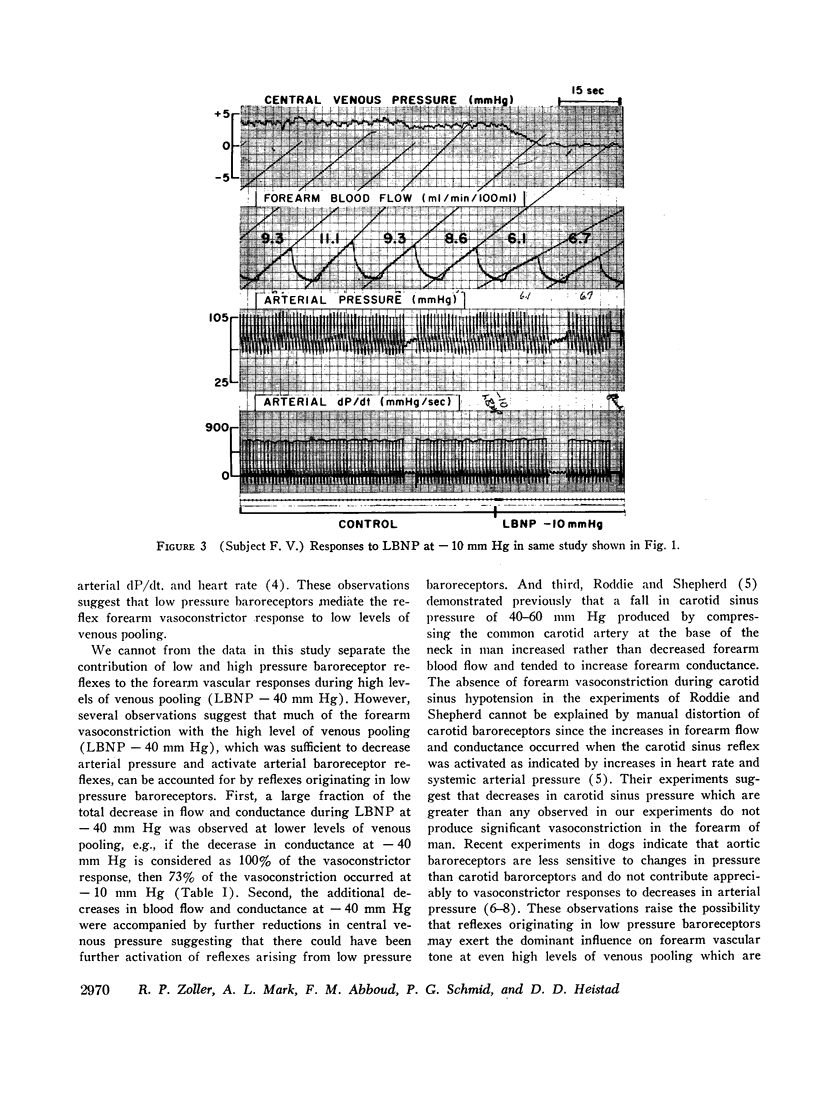
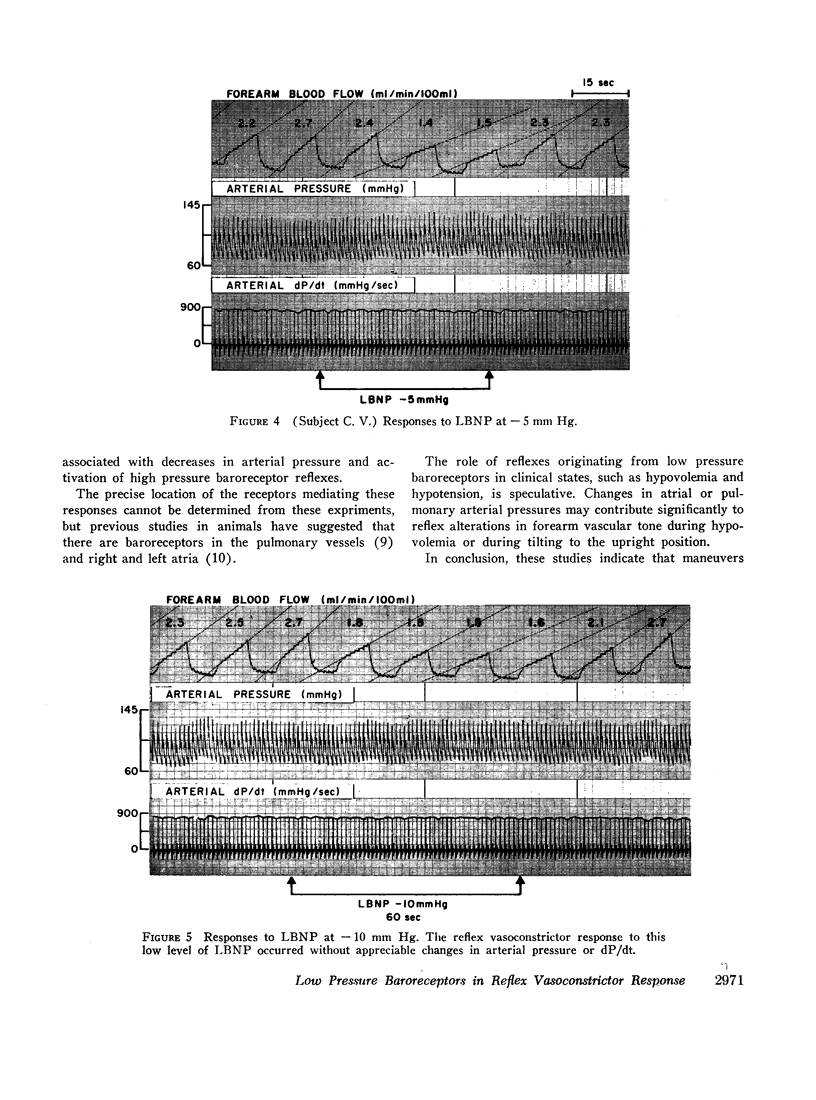
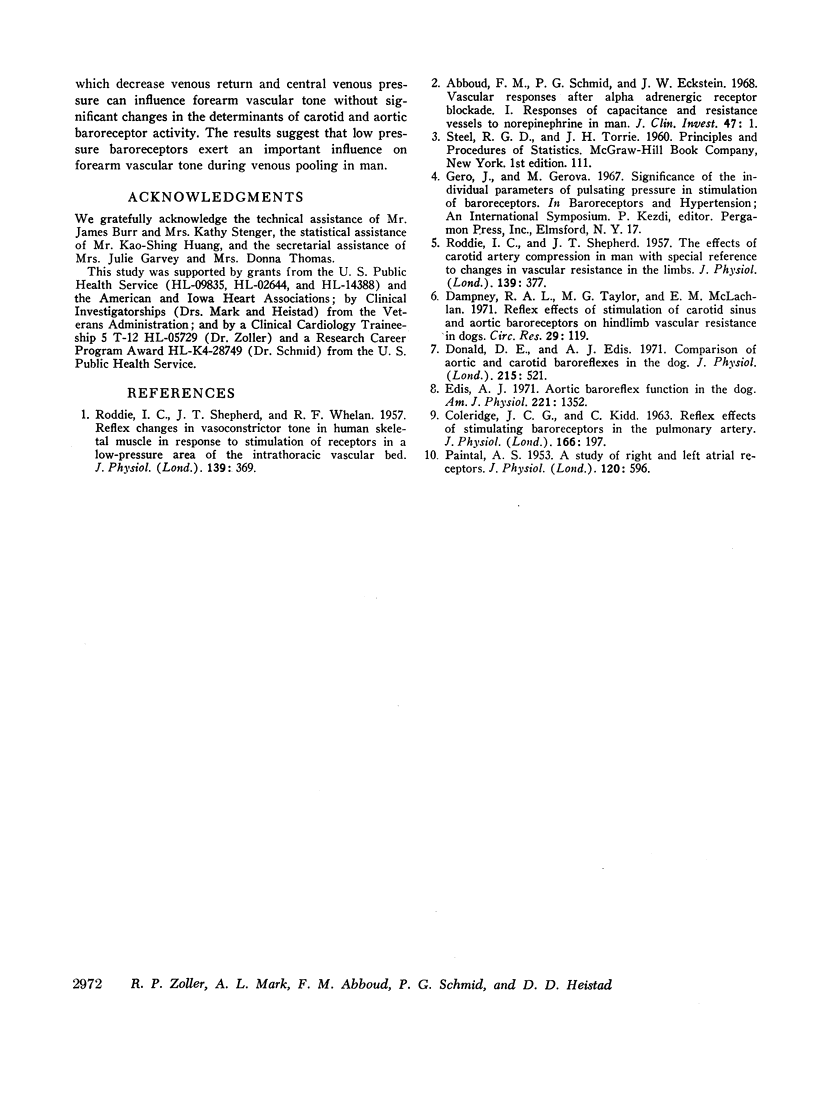
Images in this article
Selected References
These references are in PubMed. This may not be the complete list of references from this article.
- Abboud F. M., Schmid P. G., Eckstein J. W. Vascular responses after alpha adrenergic receptor blockade: I. Responses of capacitance and resistance vessels to norepinephrine in man. J Clin Invest. 1968 Jan;47(1):1–9. doi: 10.1172/JCI105699. [DOI] [PMC free article] [PubMed] [Google Scholar]
- COLERIDGE J. C., KIDD C. Reflex effects of stimulating baroreceptors in the pulmonary artery. J Physiol. 1963 Apr;166:197–210. doi: 10.1113/jphysiol.1963.sp007100. [DOI] [PMC free article] [PubMed] [Google Scholar]
- Dampney R. A., Taylor M. G., McLachlan E. M. Reflex effects of stimulation of carotid sinus and aortic baroreceptors on hindlimb vascular resistance in dogs. Circ Res. 1971 Aug;29(2):119–127. doi: 10.1161/01.res.29.2.119. [DOI] [PubMed] [Google Scholar]
- Donald D. E., Edis A. J. Comparison of aortic and carotid baroreflexes in the dog. J Physiol. 1971 Jun;215(2):521–538. doi: 10.1113/jphysiol.1971.sp009483. [DOI] [PMC free article] [PubMed] [Google Scholar]
- Edis A. J. Aortic baroreflex function in the dog. Am J Physiol. 1971 Nov;221(5):1352–1357. doi: 10.1152/ajplegacy.1971.221.5.1352. [DOI] [PubMed] [Google Scholar]
- PAINTAL A. S. A study of right and left atrial receptors. J Physiol. 1953 Jun 29;120(4):596–610. doi: 10.1113/jphysiol.1953.sp004920. [DOI] [PMC free article] [PubMed] [Google Scholar]
- RODDIE I. C., SHEPHERD J. T. The effects of carotid artery compression in man with special reference to changes in vascular resistance in the limbs. J Physiol. 1957 Dec 31;139(3):377–384. doi: 10.1113/jphysiol.1957.sp005898. [DOI] [PMC free article] [PubMed] [Google Scholar]
- RODDIE I. C., SHEPHERD J. T., WHELAN R. F. Reflex changes in vasoconstrictor tone in human skeletal muscle in response to stimulation of receptors in a low-pressure area of the intrathoracic vascular bed. J Physiol. 1957 Dec 31;139(3):369–376. doi: 10.1113/jphysiol.1957.sp005897. [DOI] [PMC free article] [PubMed] [Google Scholar]




